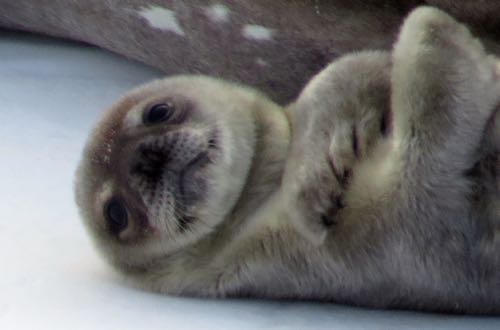 Cutest face ever. I want to take him home!
Cutest face ever. I want to take him home!
Seal pup video below, proceed with caution, you may fall in love! Weddell seals are a common sighting around McMurdo. Many days we had to drive around them as we headed to and from our field sites. They appear to move on the surface of the ice as though they were giant slugs, but under the ice, a different animal seems to emerge, graceful, sleek and powerful, they command the water.
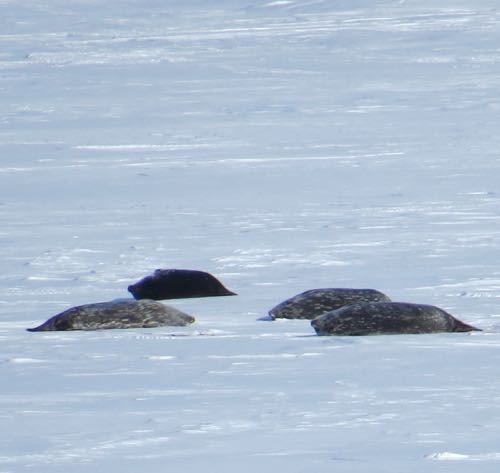 A pod of Weddell Seals out on the fast ice.
A pod of Weddell Seals out on the fast ice.
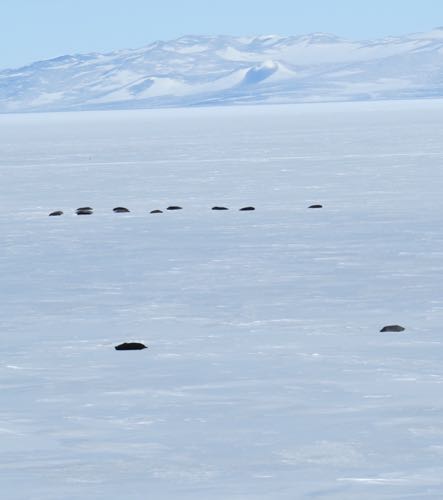 A large grouping of seals just beyond McMurdo Station.
A large grouping of seals just beyond McMurdo Station.
Weddell seals are the southernmost breeding mammal on the planet. They exhibit some of the most extreme physiology and yet are docile, seemingly sweet creatures that are not the least bit frightened of humans and do not look upon us as prey. The typical size of a seal ranges from 8-11ft with a weight from 900-1300lbs. Their body temp is similar to humans at 98.6˚F. They haul out onto the fast ice around McMurdo but are never too far from a crack or hole to allow them passage back to the sea. Their diet consists mostly of Antarctic cod, silverfish, squid, krill and octopi. They are deep divers and can hold their breath in excess of 90 minutes. The deepest dive recorded was 1200 meters or 3/4 of a mile. These mammals do not experience 'the bends' (decompression sickness), which may account for some of their ability to dive deeply.
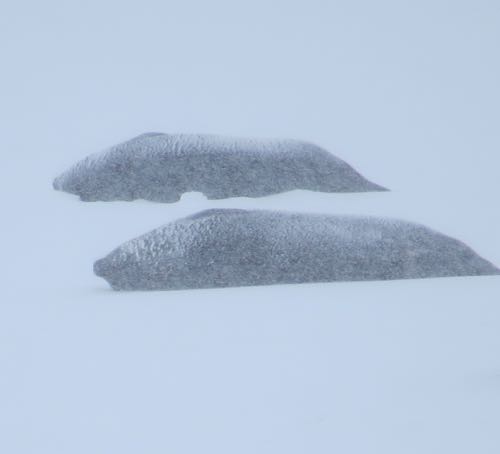 Snow covered seals. Often, they go into the water during nasty weather.
Snow covered seals. Often, they go into the water during nasty weather.
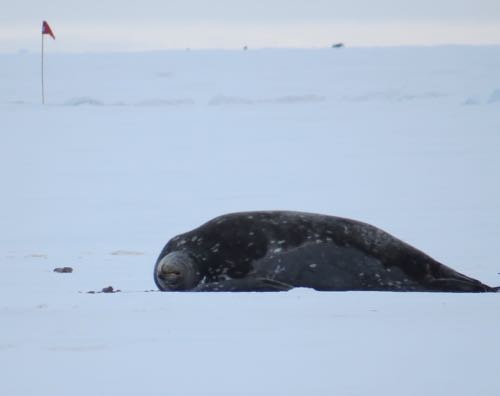 A front facing seal perhaps with a seal pup in front.
A front facing seal perhaps with a seal pup in front.
California comparative physiologist, Dr. Heather Liwanag, along with her team, are here in Antarctica to study thermoregulation and diving in Weddell seals, but in particular their seal pups. There is relatively no data on seal pups with regards to how quickly they become divers and how they manage to stay warm in the frigid environment. Dr. Liwanag gave a talk the first Sunday I was in McMurdo and I was awestruck. Her project is of great interest and well, those seal pups, incredibly adorable! If I lived in Cali, I would think very seriously about pursuing a masters degree within her lab. She is well versed in all things seal, is passionate and well spoken. She claims to be a tough professor, to which I remark, the kind you remember! She is a delight to chat with and I am confident, a well-liked and successful professor! To top it off, Heather is a mere 38 years of age and looks about 30. She is married and has a son. Her husband is charged with designing a logo for her mission! Dr. Liwanag is also looking at elephant seals in her home state of California and the unique adaptations lizards have due to their extreme environment.
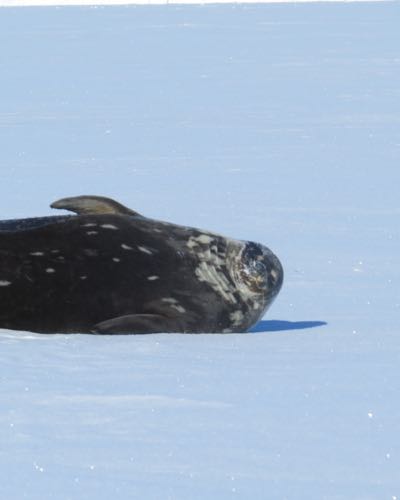 A sweet seal face. How close can I get?.. There are rules here!
A sweet seal face. How close can I get?.. There are rules here!
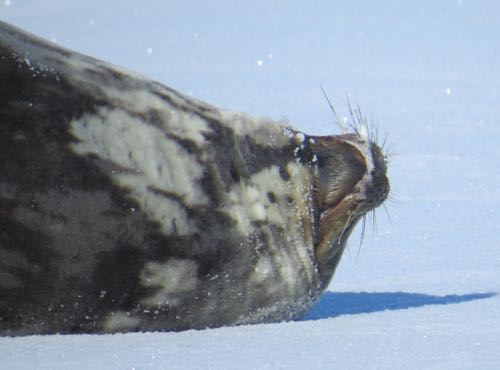 There may be rules on how close I can go, but my camera lens can get in pretty close! Look at those whiskers!
There may be rules on how close I can go, but my camera lens can get in pretty close! Look at those whiskers!
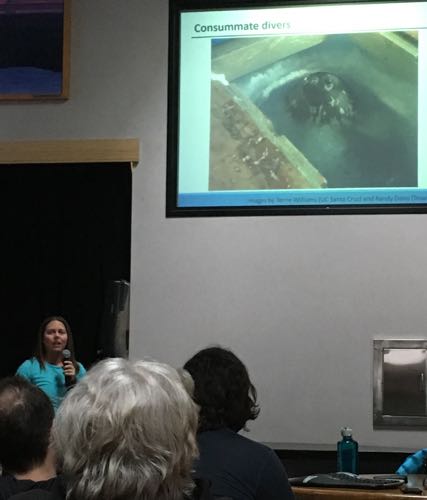 Heather is giving her presentation on Sunday Science Night in the Galley!
Heather is giving her presentation on Sunday Science Night in the Galley!
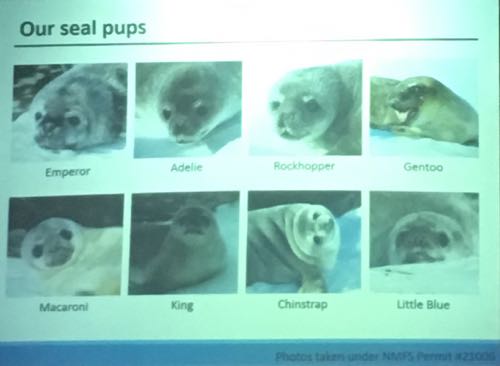 The seal pup's of Dr. Liwanag's study as shown in her PPT presentation!
The seal pup's of Dr. Liwanag's study as shown in her PPT presentation!
Seals of all types exist in polar regions. In the north, there are Ringed, Harp and Hooded seals. In the south, Weddell and Leopard seals have the run of the sea. In looking at physiology aspects of the the northern seals to those of the Weddell, there are a many comparisons of note but only a few that I will list here. The Hooded seal boasts the shortest of all weaning times for any mammal, a mere four days. The Harp seal weans in 12 days and the Ringed seal in 40 days. The Weddell seal, much like the Ringed seal weans on average from 35-52 days. Milk fat percent for seals is high. Whole milk (cow's milk) has about 4% fat, these seals are producing milk fat between 40-61%. Hence, the short wean times. This milk fat is meant to fatten these seals to prepare them for life in the cold. They need to gain blubber quickly as their lanugo (baby fur) doesn't last terribly long and isn't sufficient enough to insulate them from the cold icy waters and fast ice.
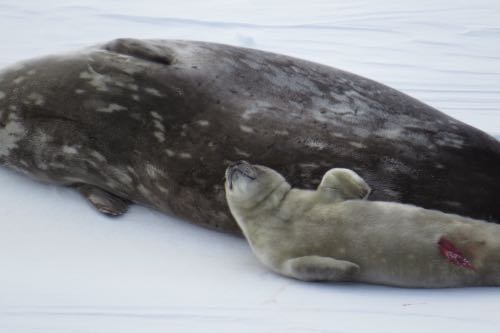 New born seal pup snuggling with its mom!
New born seal pup snuggling with its mom!
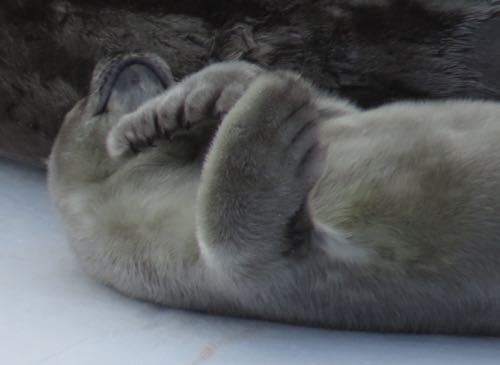 Pup flippers covered in lanugo (baby fur).
Pup flippers covered in lanugo (baby fur).
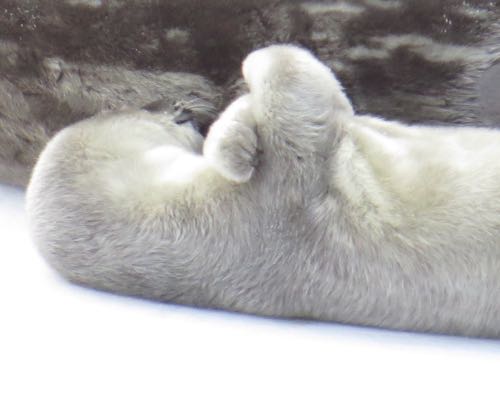 Pup is trying to figure out where to nurse. He might be struggling a bit!
Pup is trying to figure out where to nurse. He might be struggling a bit!
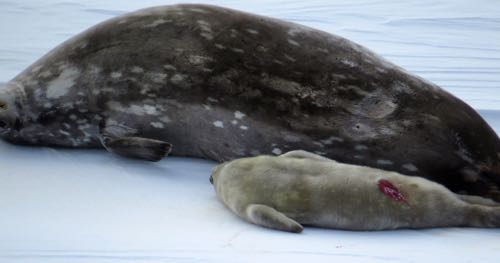 Mom and pup together.
Mom and pup together.
Take a look at the pics and enjoy the video. Lorax certainly did. Today's version is for Julia, a former APES student and current student at Nicolet!
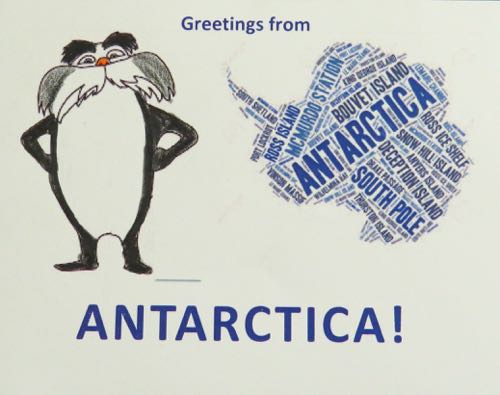 Flat Lorax postcards for Julia, a former APES student!
Flat Lorax postcards for Julia, a former APES student!

Add new comment